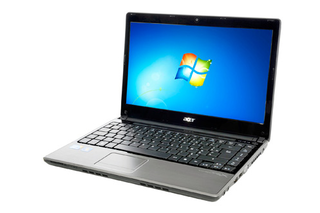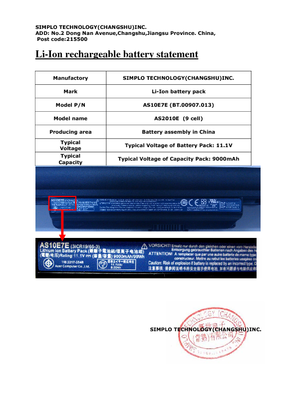
3

Document No.: LIP-PSDS-2011-051 Panasonic Corporation Energy Company 3/5 Facilities : Provide appropriate ventilation system such as local ventilator in the storage place. Protective clothing : Gas mask for organic gases, safety goggle, safety glove. 9. Physical and Chemical Properties of Single Cell Appearance : Single cell: Cylindrical or Prismatic cell Nominal voltage : Single cell: Please see attached sheet (Applied Model Name) 10. Stability and Reactivity Since batteries utilize a chemical reaction they are actually considered a chemical product. As such, battery performance will deteriorate over time even if stored for a long period of time without being used. In addition, the various usage conditions such as charge, discharge, ambient temperature, etc. are not maintained within the specified ranges the life expectancy of the battery may be shortened or the device in which the battery is used may be damaged by electrolyte leakage. 11. Toxicology Information (in case of electrolyte leakage from the battery) Acute toxicity : Oral (rat) LD50 >2g/kg (estimated) Irritation : Irritating to eyes and skin. Mutagenicity : Not specified. Chronic toxicity : Not specified. 12. Ecological Information In case of the worn-out battery was disposed in land, the battery case may be corroded, and leak electrolyte. But, we have no ecological information. Heavy metal in battery : Mercury(Hg) and Cadmium(Cd) are neither contained nor used in battery. 13. Disposal Conditions (Precautions for recycling) When the battery is worn out, dispose of it under the ordinance of each local government or the low issued by relating government. Disposal of the worn-out battery may be subjected to Collection and Recycling Regulation. 14. Transportation Information Even classified as lithium ion batteries UN3480 or UN 3481(Contained in Equipment or Packed with Equipment), the product is handled as Non-Dangerous Goods by meeting the UN Recommendations on the Transportation of Dangerous Goods Model Regulations Special Provision SP188. (1) (a) For a lithium-ion cell, the Watt-hour rating is not more than 20 Wh; (b) For a lithium-ion battery, the Watt-hour rating is not more than100 Wh. Lithium ion batteries subject to this provision shall be marked with the Watt-hour rating on the outside case, except those manufactured before 1 January 2009 ; (c) Each cell or battery is of the type proved to meet the requirements of each test in the UN Manual of Tests








![前ページ カーソルキー[←]でも移動](http://gizport.jp/static/images/arrow_left2.png)












